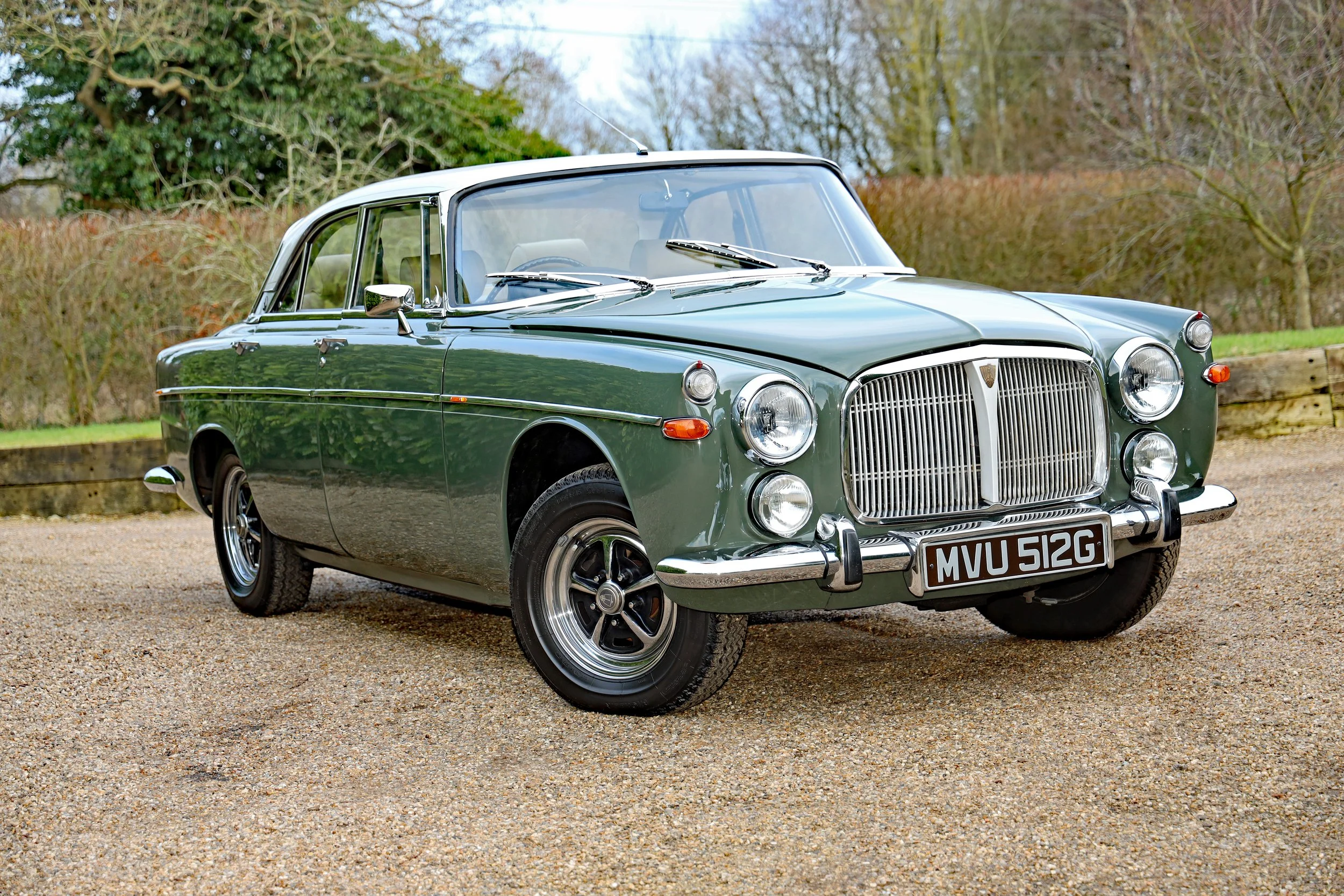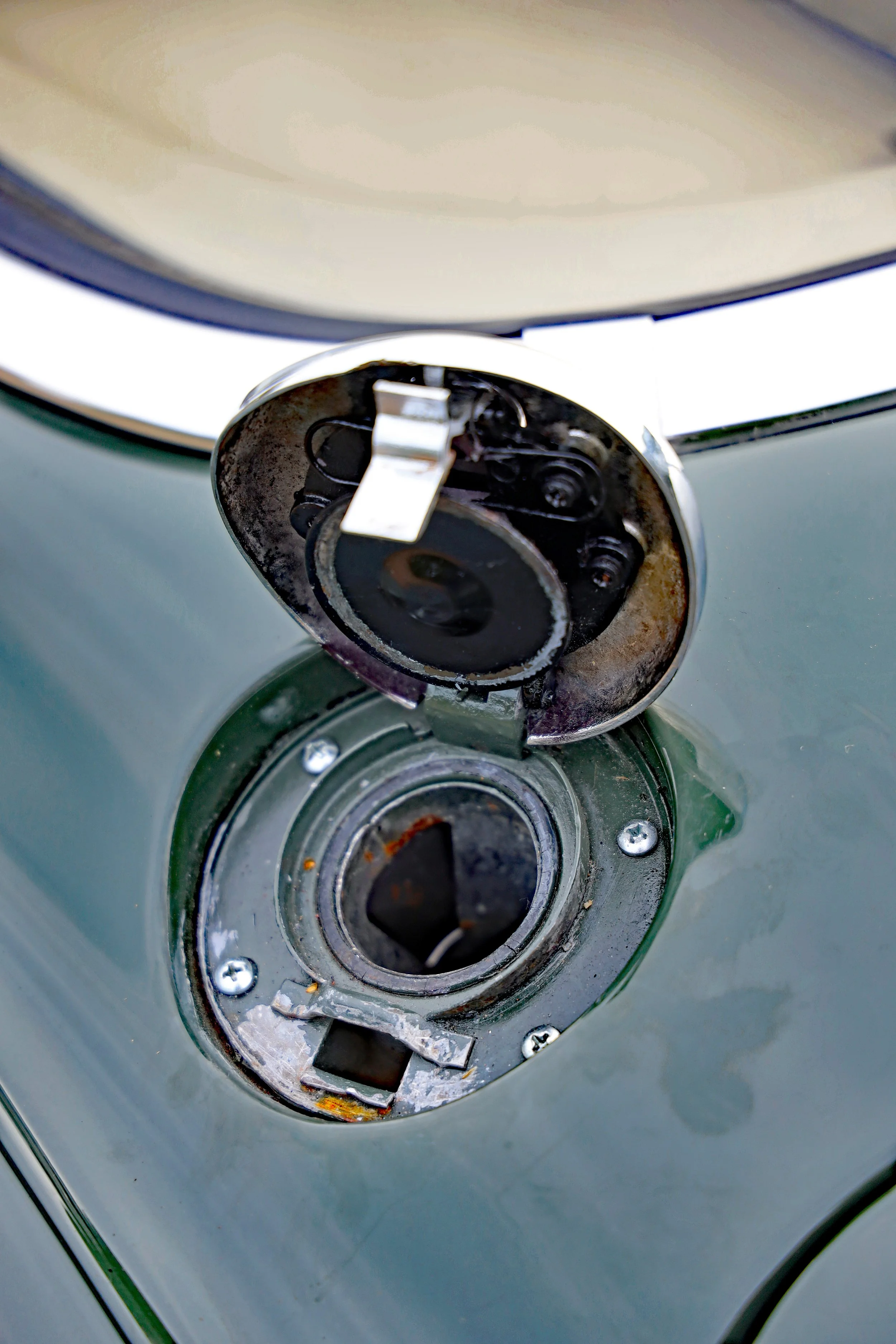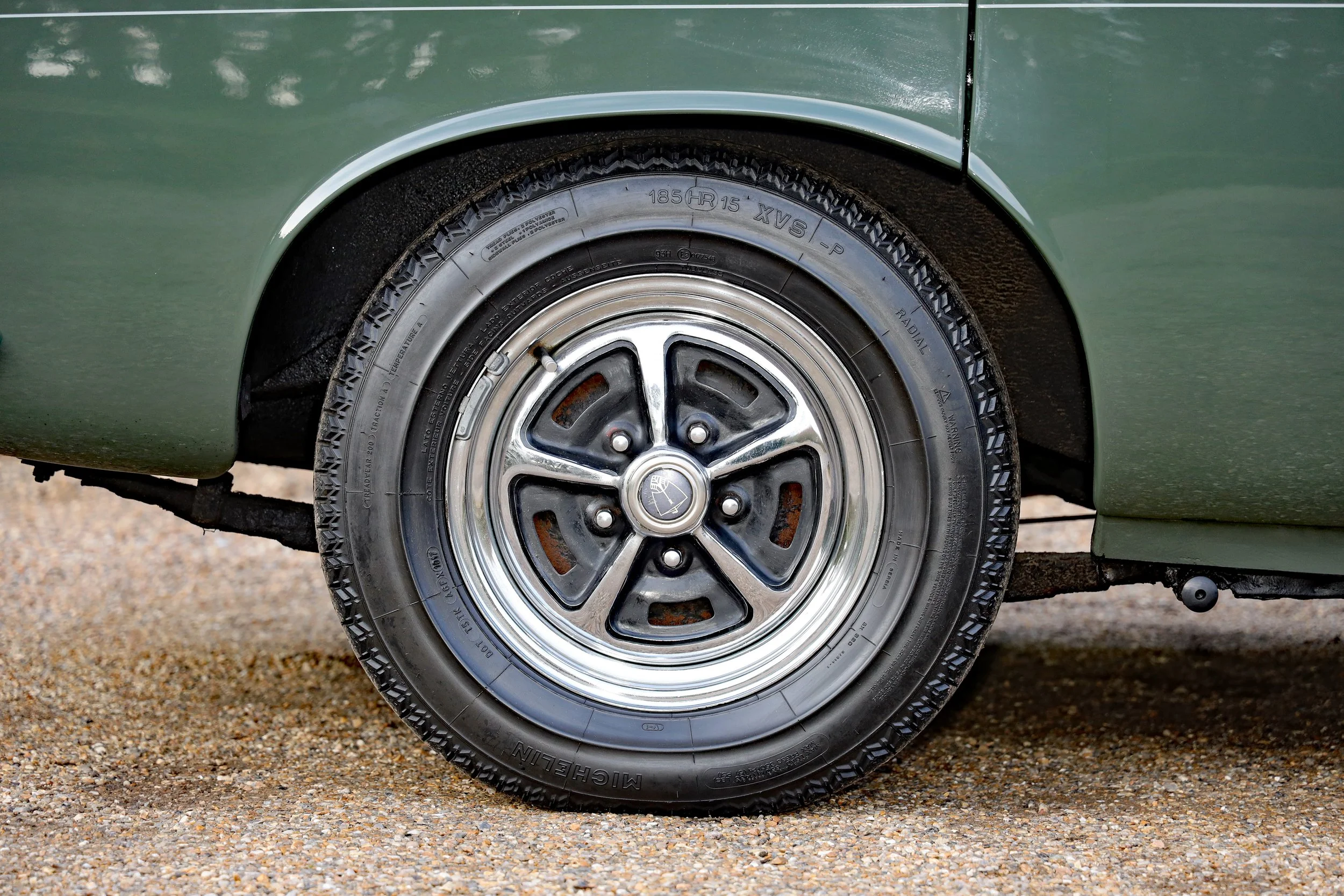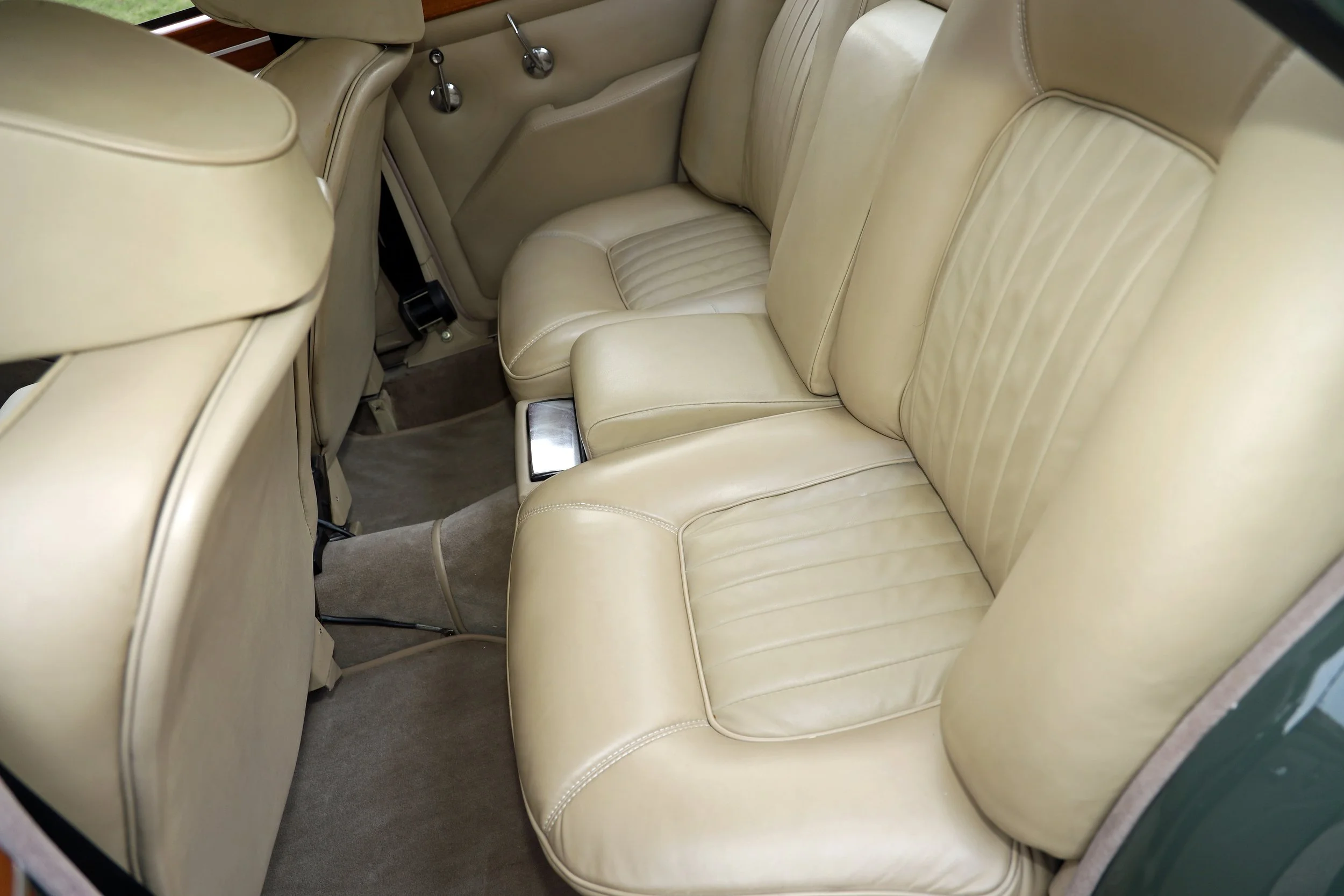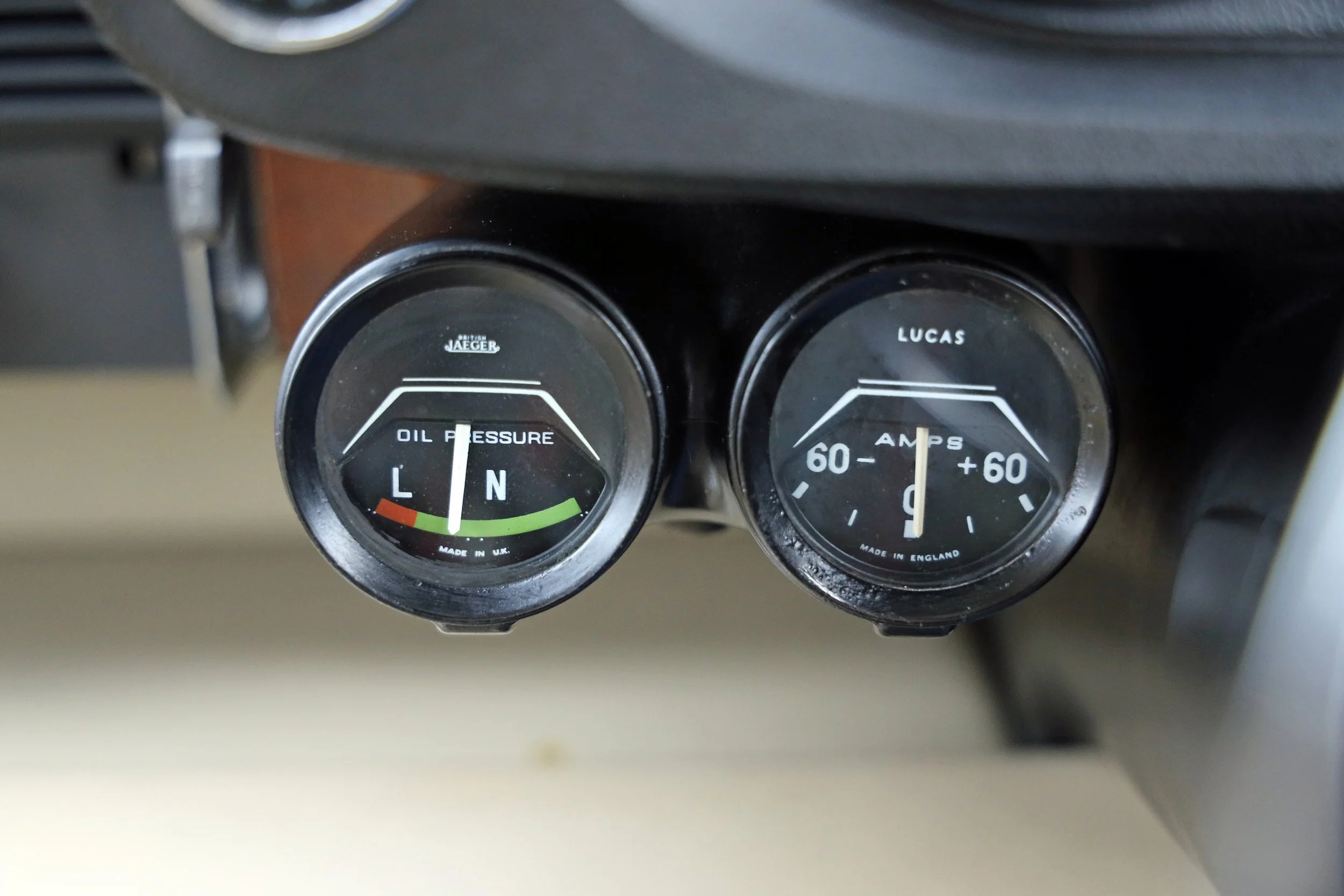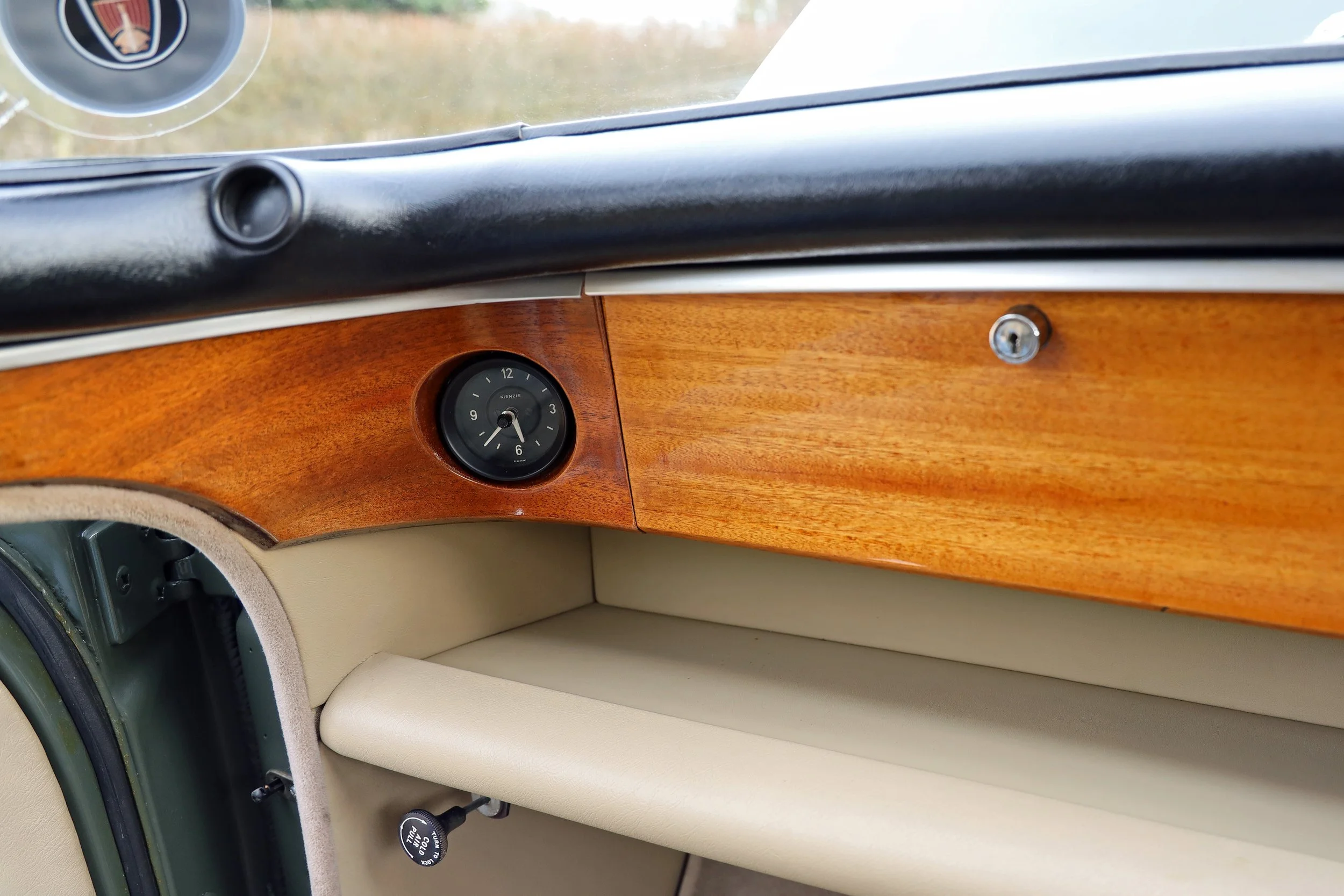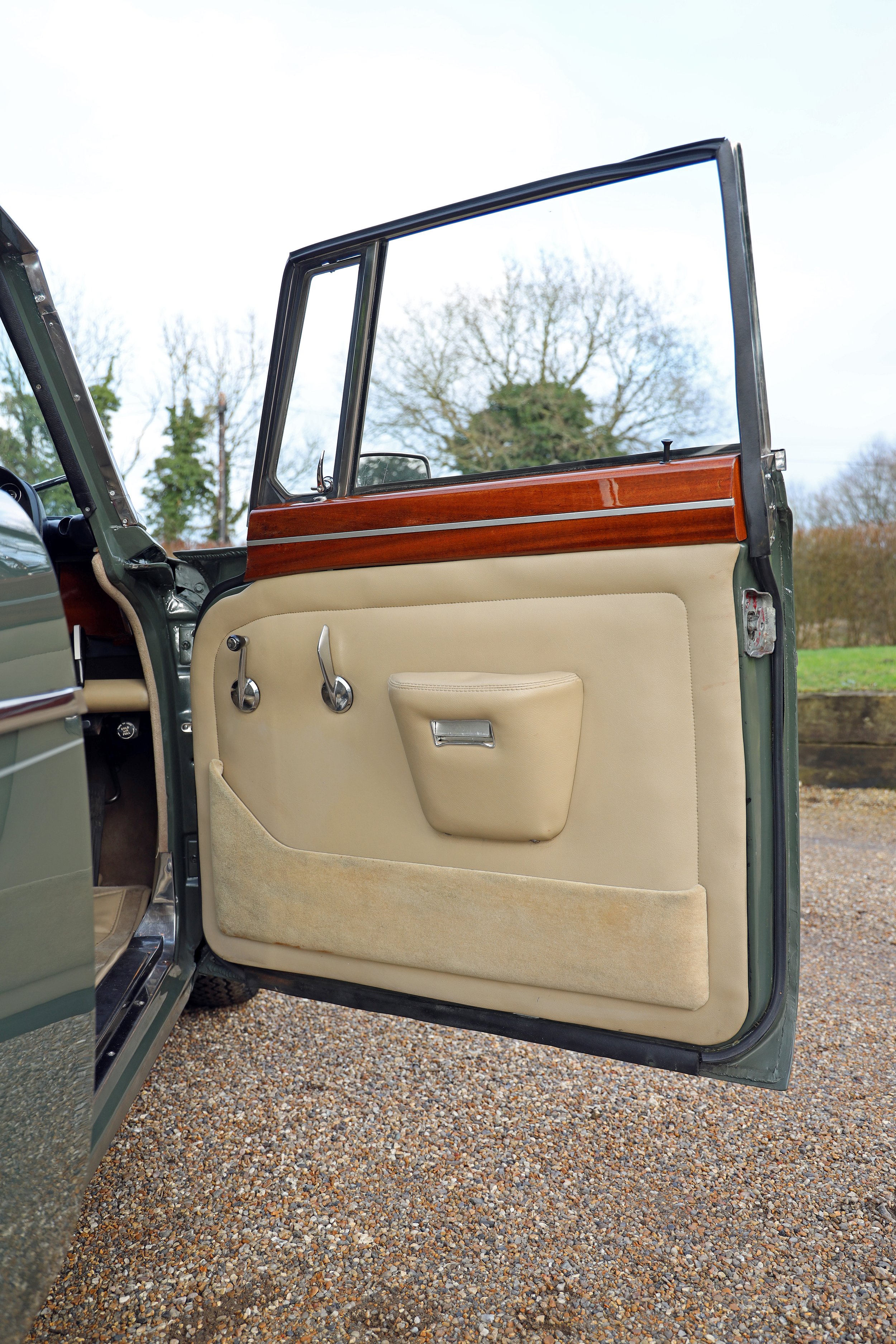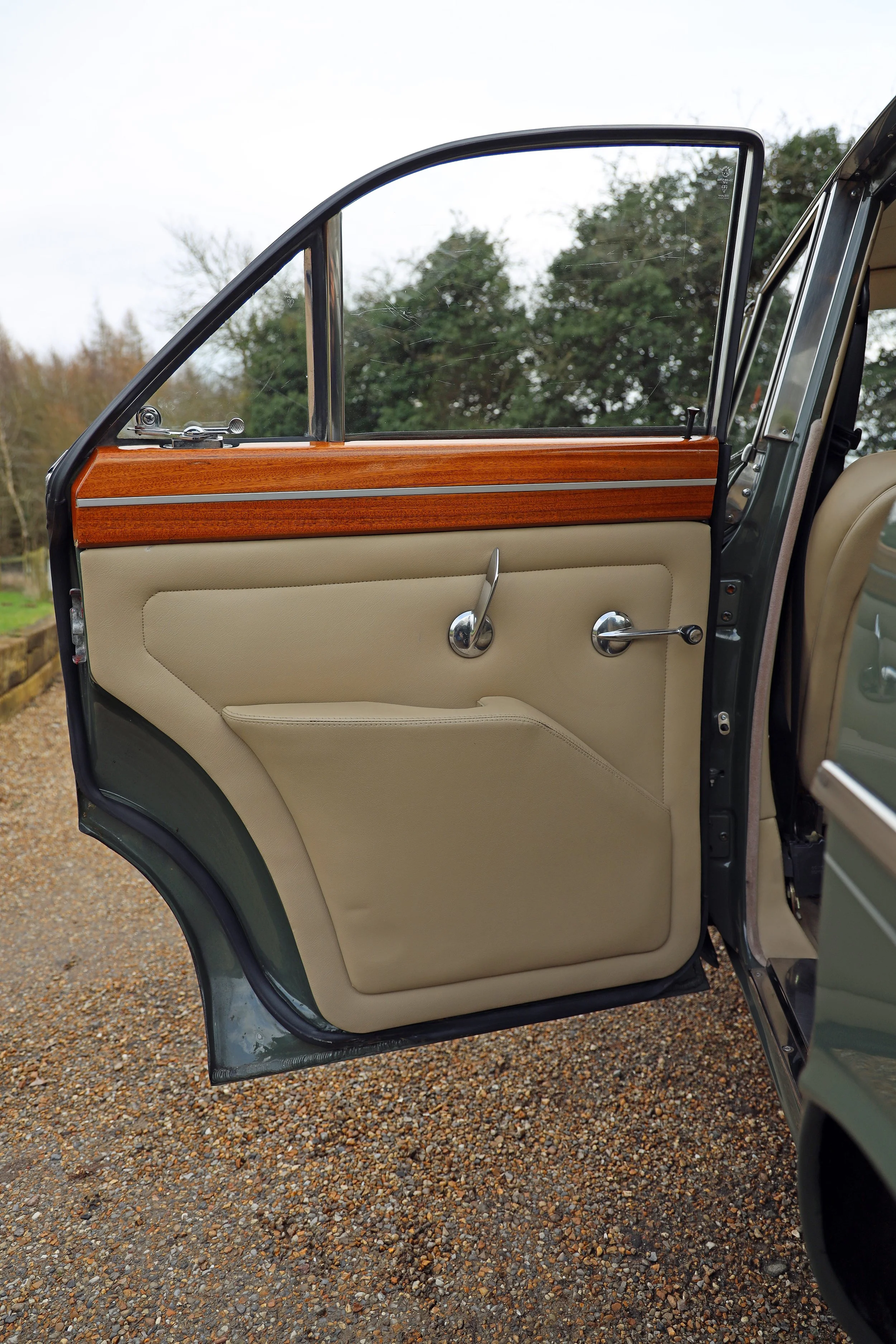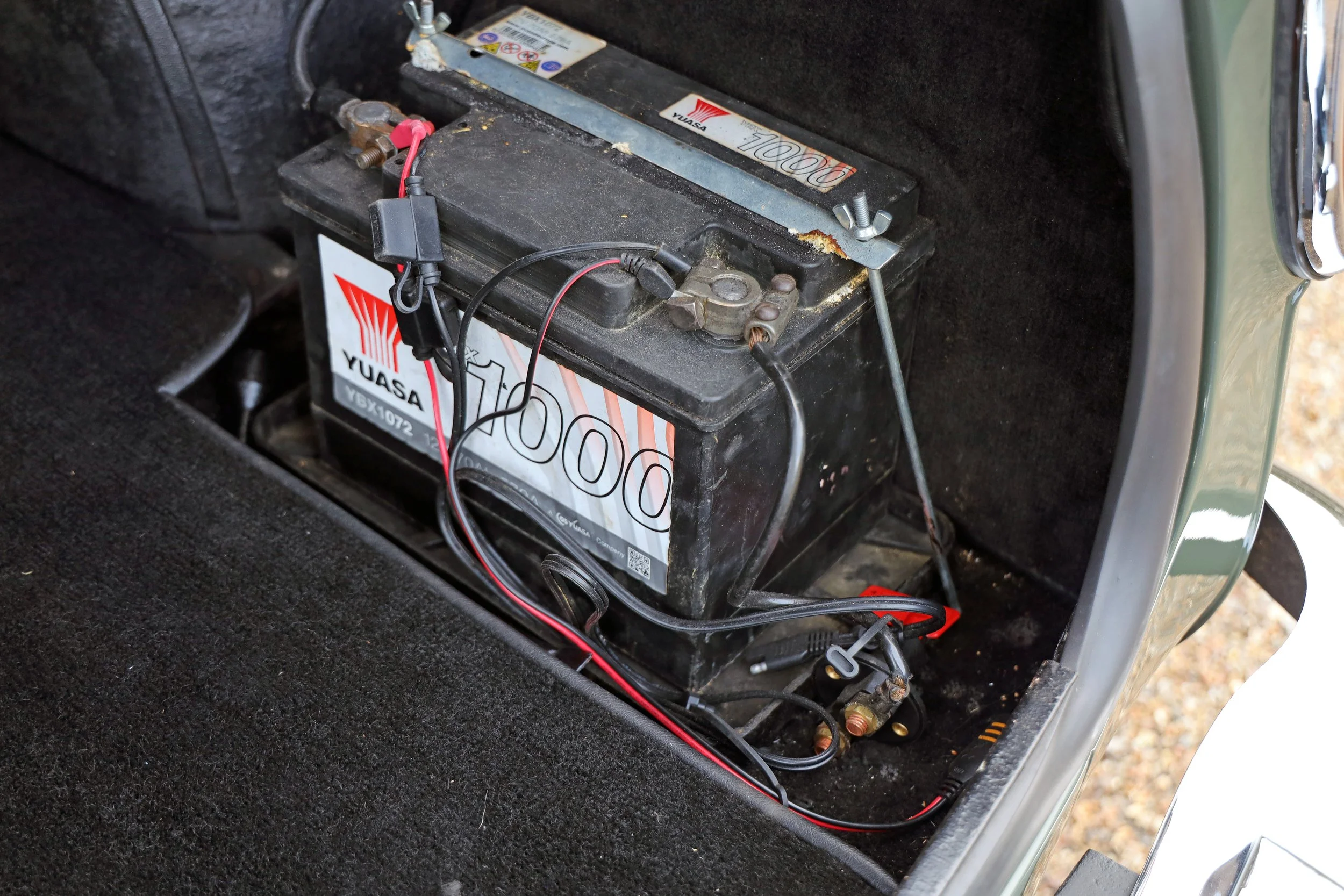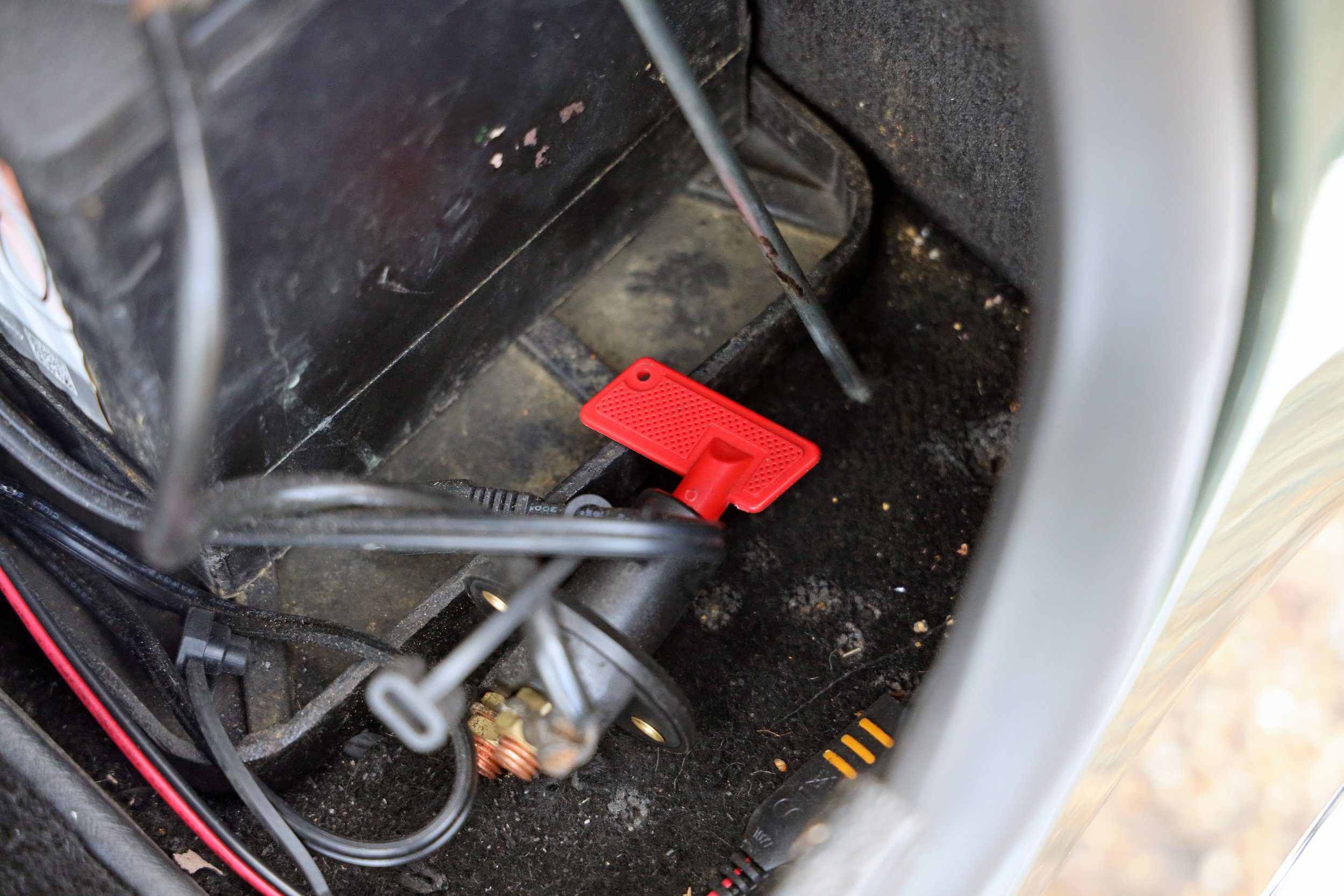1969 Rover 3.5 Litre P5B Coupe
PRICE £POA
YEAR 1969
ENGINE 3528cc/V8/OHV/twin-SU HS6 carburettors
POWER 161bhp@5200rpm
TORQUE 210lb ft@2600rpm
MAXIMUM SPEED 109mph
0-60MPH 12.4sec
GEARBOX RWD, three-speed Borg-Warner Type 35 automatic
MILEAGE 58,025 miles
MOT 12 months from sale
CHASSIS NUMBER 84502895C
COLOUR Two-tone green/grey
INTERIOR Beige leather
WIDTH 1786mm
LENGTH 4737mm
A lately lightly-used and superb example of the most desirable variant of the stately Rover P5, in coupe form and with V8 engine
BACKGROUND
Rover was on a high during the 1950s. The Land Rover, originally intended as a stopgap utilitarian vehicle while Europe rebuilt itself from World War Two, had been a surprise runaway success and became the company’s biggest seller throughout the decade. That allowed the company, best-known for its upmarket traditional saloons despite the popularity of its non nonsense mud-plugger, to plough considerable resources into developing a successor to its P4, which had been around since 1949.
The result was the P5, which was launched in 1958. It was a bigger, more luxurious car than the P4 (which ran alongside its new stablemate until 1964) and saw Rover introduce monocoque construction. The body was styled by David Bache, who’d moved to the company in 1954 as its first ever stylist. He was influenced by the Citroen DS - as difficult as it may be to see this in the Rover’s more upright shape - as well as the Facel Vega, which is more apparent in the P5’s very imposing style. The designs of Ghia for Chrysler, and the work of Pininfarina, also guided Bache’s hand.
The P5 was initially christened the Rover 3 Litre, and carried over the inlet-over-exhaust engine format from the P4, albeit enlarged to 2995cc and boasting 115bhp. In 1962, a MkII variant came out - now featuring 129bhp - and some some body and suspension improvements. However, the big news was what happened to the roof, with the creation of a new coupe body, which lowered the car’s height by two and a half inches and added thinner B-pillars. It made an already handsome car even more attractive.
Rover wasn’t finished there though; in 1967, the 3 Litre became the 3.5 Litre, thanks to the installation of Rover’s V8 engine, recently acquired from Buick in the USA. This motor, which would go on to be used in so many great British cars, found its first UK home in the P5B (with the ‘B’ standing for ‘Buick’) and boosted power to 158bhp. Rostyle wheels and front fog lamps were also adopted.
The P5B stayed in production until 1973, but such was its popularity with the government - and especially Prime Ministers such as Harold Wilson, Edward Heath, James Callaghan and Margaret Thatcher - that some of the last cars were stockpiled and released for use as and when required. This meant that, at least around Whitehall and on the TV news, Rover P5Bs were still common sights until the mid-1980s. The Queen was also quite a fan as well, owning several.
THE VEHICLE
This very smart P5B Coupe was registered in July 1969, just a few days before the crew of Apollo 11 landed on the moon. From the information in the extensive paperwork folder, it seems that it was originally Bordeaux Red with Silver Birch Roof, with Parchment leather and beige wool carpets inside. By the 21st century it had passed into the hands of a true P5 enthusiast, who’d owned multiple examples. He had it restored and recommissioned around 2010 at a cost of around £11,000. There was further extensive work in 2012 and 2015 during which, presumably, the current colours of two-tone green and grey were adopted.
Although its renovation was some years ago, this Rover has done very few miles over the past few years. An online check on its MoT history reveals that its mileage in 2008 was recorded as 54,904. It’s now showing 58,205, so just a smidgeon over 3300 miles have been covered since then. Thus it remains in prime order both inside and out, and drives just as well as it looks.
BODYWORK
The body and paintwork are close to exemplary condition, with the duo-tone green and grey livery especially suiting the Rover’s very dignified lines. There are very few blemishes to be found anywhere on the shell and even the pinstriping underneath the main side trim is unbroken and shows no fading or unevenness.
The chromework is excellent throughout, with only some minor tarnishing noticeable on items like the door handles and petrol cap if you look very closely. These appear to be the original items dating from before the restoration though, so some signs of the passage of over 50 years is understandable.
While the car, externally, looks completely standard, one subtle but sensible upgrade is the fitment of a third LED brake light in the rear numberplate lamp. It’s only noticeable when it glows; a clever installation that in no way harms the original appearance of the car and adds to the Rover’s visibility at night, making it a very wise precaution.
The Rostyle wheels show little wear, and are shod with Michelin XVS 185 HR15 tyres all around. They’re date-stamped 2017, so have seen very little use; thus there’s plenty of life left with lots of tread and no signs of damage or perishing.
INTERIOR
These were prestigious machines in their day - good enough for Royalty and Prime Ministers - and so the level of luxury in the cabin is high. Unlike the exterior, the cabin has retained its Parchment leather colour scheme (albeit obviously retrimmed), complemented by the usual African cherry wood for the dashboard inserts and door cappings. There are hardly any signs or wear or marks, with the seats displaying very little in the way of patina; even the most oft-used driver’s seat looks like it has hardly been sat in. Beige isn’t exactly the easiest of shades to keep free of dirt, but despite this, the carpets and door cards are very clean and tidy. There are no real issues with the wood; this includes the pull-out tray in the centre console. This is just so much classier than the cup holders you find in modern cars, if a little less stable for containers at speed.
All the gauges function as they should (including the pod ones under the main fascia), as do the controls. This includes the Kienzle clock, over on the passenger side of the vehicle - these often stop working with age, but this one still runs like, well, clockwork. A period Radiomobile transistor radio is fitted, which looks very much at home in the middle of the dash.
The boot area is carpeted in black, and it’s all in a very good state. The battery is covered by a carpeted lid, and has a red cut-off switch wired in, for extra security. The boot also contains two additional numberplates, for both the front and rear. The ones already fitted are pressed black ones with brushed aluminium digits; the spares are ones with raised white plastic digits. They look absolutely brand new and have never been put on the car.
ENGINE AND RUNNING GEAR
The Rover V8 fills the engine bay quite comprehensively, although there’s still quite a bit of space around to be able to work on it. Fortunately, it doesn’t seem like any attention will be needed soon, as the engine starts and runs well - with that lovely V8 burble. Lumenition electronic ignition is fitted, which is no doubt part of the reason why this car starts so easily. The engine bay is clean and tidy,with no signs of any fluid leaks; those fluids incidentally are healthy and at the levels they should be.
The same attention to detail that went into the exterior and interior was obviously given to the engine and its running gear as well, for the motor feels just as lively and strong as it should; immensely smooth and with enough reserves of power to push the big Rover along with pace, precision and presence. There are no untoward noises - from the engine, gearbox or suspension - and the automatic transmission shifts up and down with no problems. The brakes do a good job of reining in what is quite a hefty bit of British metal, while placing the car accurately on the road is aided by the power steering. In short, this Rover behaves itself exactly as Solihull planned when it was built 53 years ago. Its road manners are impeccable and it cuts quite the refined dash.
SUMMARY
There can’t be that many Rover P5B coupes around that are in as fine a condition as this one. Since its restoration around 12 years ago, along with more recent ‘refreshes’ during the second decade of the 21st century, it has obviously been well-looked after and covered very few miles. Because of this, it’s still excellent throughout, looking like the renovation was only done 12 months ago rather than 12 years. With a driving experience that matches its lovely appearance, this is a Rover fit for a Queen. Or a Prime Minister.
While Greenside Cars Ltd has tried to ensure information and assessments are accurate and complete, we are aware that some errors and omissions may occur from time to time. We are not able, therefore, to guarantee the accuracy of information and cannot accept liability for loss or damage arising from it. We highly recommend that you examine any vehicle to check the reliability of the information supplied. Please contact us for further details, images, or to arrange a viewing of this Rover 3.5-Litre P5B Coupe.



